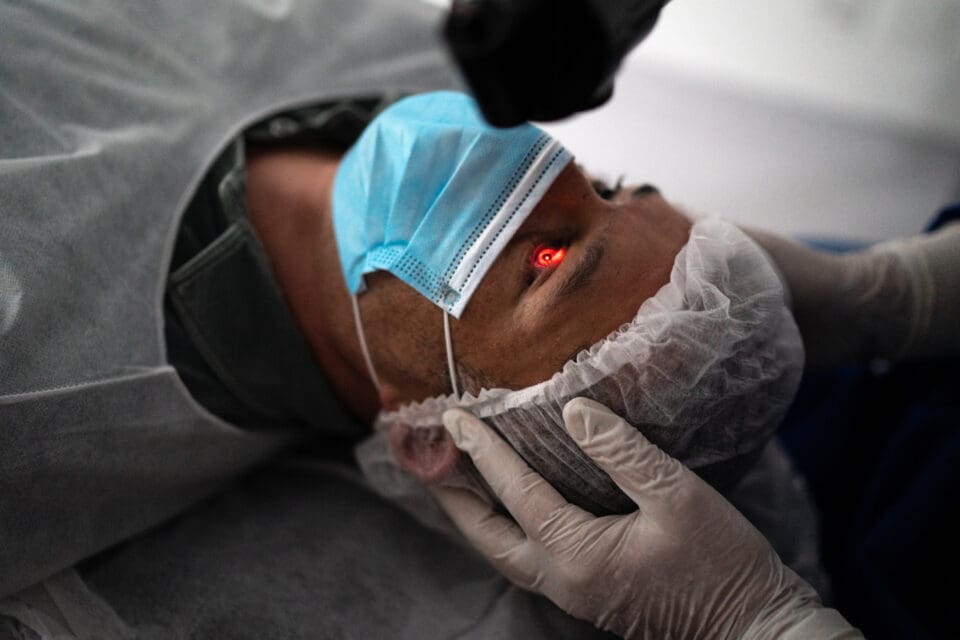
Procedures
Collagen Cross-Linking (CXL) for Keratoconus
Collagen cross-linking strengthens your cornea to prevent the progression of Keratoconus. Learn more about how CXL can put a halt to the progressive disease.
Stop the Progression of Keratoconus
Keratoconus is a progressive disease of the cornea. With collagen cross-linking (CXL), you can halt the progression of keratoconus by strengthening your cornea. This ground-breaking procedure has helped tens of thousands of people around the world. NVISION is proud to offer the only FDA approved cross-linking treatment for keratoconus. Most major insurance plans do cover CXL.
Condition Treated
Keratoconus
Keratoconus is a condition where the clear tissue on the front of the eye (cornea) is weakened or thinning causing it to progressively bulge outward. Symptoms typically occur during a person’s teen years and include blurred vision. It is typically not correctable with glasses, requiring specialty contact lenses, or in severe cases if left untreated, a corneal transplant. Collagen Cross Linking is a procedure that should be performed ASAP to stop or slow down the progression of Keratoconus.
Why Choose NVISION for Eye Care Needs?
Our Experience
Our board-certified surgeons are the most experienced, educated and caring professionals in the eye care industry. Our surgeons have performed over 2,500,000 procedures. More eye doctors have had their surgery performed by an NVISION surgeon than any other provider of eye care.
Patient Care
Every NVISION patient is different, and therefore, we strive to personalize their treatment based on their unique needs. We treat every patient with care, compassion, empathy and professionalism with a promise to deliver the best-in-class patient care.
Technology
We utilize only the most advanced laser and diagnostic equipment available to ensure we can deliver the best outcomes for our patients.

Common Questions About Collagen Cross-Linking (CXL) for Keratoconus
How does cross-linking work?
If you have keratoconus, your cornea has too few cross-links—or support beams—allowing your cornea to bulge outward into a cone shape.
The cross-linking procedure adds cross-links to your cornea. Once it has been distorted, the cornea cannot regain it’s normal shape. CXL strengthens your cornea, which stops the thinning process and limits further vision loss.
Why choose NVISION to treat your keratoconus?
NVISION is one of the leaders in keratoconus care and surgery. Our surgeons will thoroughly analyze your unique condition to develop a personalized treatment approach. Other procedures can be used in conjunction with CXL such as INTACS, EVO ICL, Laser Vision Correction – to reduce your dependence on glasses and contacts.
Is cross-linking right for me?
Early treatment for keratoconus is necessary to prevent it’s progression. While the patients that benefit the most from crosslinking are in their teens or twenties, any patient that demonstrates active disease with progressive thinning can benefit. CXL is a treatment to consider if you are in one of the following categories:
- You have been newly diagnosed with keratoconus. The earlier you have the treatment, the earlier you have the potential of stopping your disease from progressing.
- You have been living with keratoconus—even if you are getting good vision with contacts. Your disease may very well be progressing despite good vision or comfortable contact lens wear. Any progression is irreversible, and CXL is the only procedure that can stop the progression of the disease.
Schedule Your Exam or Procedure Today!
